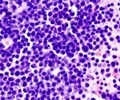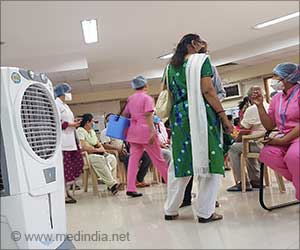Nobel Laureate US president Barack Obama had set the wheel rolling when he decided to lift the ban on federal funding for embryonic stem cell research. This decision may have little bearing on India except that it might prompt our policy- framers to speedily legislate the drafted guidelines and hasten stem cell research in the country.
Indian newspapers and the visual media are abuzz with the wonders of stem cell transplantation and its impact on grave diseases. But little do the general public know that the stem cell scenario in India is still in its nascent stage and that people are actually counting the chickens even before they hatch.In developed countries where clinical research and medicine are governed by tougher regulatory bodies the therapeutic use of stem cells is still at the experimental stage. This is because stem cell therapeutics have actually come up with negative side effects and unexpected complications during clinical trials with animals.
Indian Guinea Pigs
We are only too aware that clinical trials are, at times, being held in India after they have failed at the Phase 1 level in the Western countries. At times patients who are used as guinea pigs, are blissfully unaware of the potential side effects of the procedures being carried out on them.
All this happens because we lack the scientific temperament that are a way of life in affluent countries. Sadly, the ethics of these ‘ethical’ countries is confined to their geographical boundaries and does not apply to mankind at large.
Controversial Claims - Rogue Research
In India we encounter unabashed claims by individuals (and institutions) offering stem cell therapy to patients in order to cure them of a wide range of diseases.
Example 1 : A classic example is that of Delhi’s Nu tech Mediworld, a registered IVF and Genetic Center in Delhi, that claimed to have successfully treated 100 patients suffering from conditions such as paralysis, Alzheimer, and Parkinson's disease using stem cell therapy. But government was cautious and ordered an enquiry into the clinic’s activities and warned that stern action would be taken against the guilty who took advantage of patients’ vulnerability.
The clinic’s patients included bigwigs such as Mr Ajit Jogi, Chief Minister of Chattisgarh who is wheelchair bound, having suffered spinal cord injury.
Example2: Another example is Lifeline hospital in Chennai which has made claims of having treated patients with spinal cord damage and various types of cancers. According to Sunil K Pandya’s article in the Indian Journal of Medical Ethics the website of this hospital allegedly claimed: “All Stem cell trials in Life Line Hospital are registered with NIH, USA and ICMR, India.”
However, Dr Vasantha Muthuswamy, senior deputy director-general, ICMR, says, “We have not given any approval to Lifeline Hospital.”
Example 3-All India Institute of Medical Sciences (AIIMS), New Delhi, went public with its success in treating people with cardiac diseases using stem cell transplants.
Counter Claims
Dr Vasantha Muthuswamy, senior deputy director-general, ICMR, refutes the claims of these stem cell clinics.
She says “ICMR has not given recognition to any center for clinical applications. The only centers which we have cleared for basic research on stem cell biology are Manipal Acunova, Bangalore and Niche in stem cell research and regenerative medicine at Chennai.”
Dr. Vasantha is clearly not pleased when she says “We are only a block away from AIIMS and we did not know this was happening there. If the nation's premier medical institute did not ask our permission for such therapy, how can we blame private clinics for what they do?”
The senior deputy director-general of ICMR has voiced her concern to Nature, and referred to the mushrooming of clinics offering stem cell therapy without any sound ethical or scientific backing. “We want to promote stem-cell technology but not in this scandalous way,” she confirmed.
Dr P M Bhargava, founding director of the Centre for Cellular and Molecular Biology(CCMB), Hyderabad, bemoans the lack of a statutory agency that could prevent the unauthorized use of stem cells.
The verdict
The National Institutes of Health (NIH), USA, emphasizes the following on website:
“Adult stem cells, such as blood-forming stem cells in bone marrow... are currently the only type of stem cell commonly used to treat human diseases. Doctors have been transferring [such cells] in bone marrow transplants for over 40 years... The clinical potential of adult stem cells has also been demonstrated in the treatment of other human diseases that include diabetes and advanced kidney cancer. However, these newer uses have involved studies with a very limited number of patients.”
Stem cells- Therapeutic potential
Stem cells are primary cells endowed with the amazing properties. They are pluri-potent in nature and are therefore capable of differentiating into various types of specialized body cells with different functions. Besides they are also capable of renewing themselves with ease through replication. Due to these properties the stem cells are potentially, a constant source of healthy cells. Stem cell transplants are, therefore, carried out with the purpose of displacing unhealthy cells with healthy ones.
Stem cells are classified into embryonic stem cells and adult stem cells. Adult stem cells are sourced from the bone marrow, liver, brain, long bones and the peripheral blood.
Adult stem cells are quite rare – only few types of adult cells can be isolated without actually harming the patient. Hence the most popular form of adult stem cells are hematopoietic stem cells (HSCs) derived mostly from the bone marrow, peripheral blood or the umbilical cord.. These HSCs are administered along with mesenchymal cells and tissue progenitor cells to enble the better targeting and growth .
Adult stem cells have been particularly useful in treating patients with hematological conditions such as aplastic anemia, various types of cancers such as leukemia, multiple myeloma, non-hematological conditions such as osteopetrosis, solid tumors such as renal cell carcinoma and some immunological diseases
Stem cell research, which has advanced by leaps and bounds, has made it treatment a possibility (at least in the future) for patients with a wide range of conditions such as certain genetic disorders, lymphoma, auto immune diseases, type 1 diabetes, Parkinson’s & Alzheimer’s disease, spinal cord damage, liver conditions, amyotrophic lateral sclerosis, multiple sclerosis, muscle damage, arthritis and progeria.
Embryonic stem cells have not been used for therapeutic purposes although research is ongoing in some countries.
Japanese scientists are working on a futuristic project which hopes to create RBC progenitor cell lines from embryonic stem cells. These progenitor cells would then be a steady source of RBCs (without incompatibility problems and infection free) for humanity through out the world!
Ethics & Hidden truths
There is a lot of hue and cry regarding the use of embryonic stem cells mostly because they are procured by destroying 5-day old embryos known as the blastocyst. Others associate embryonic stem cells with unlicensed cloning and a potential source of trouble.
There is no restriction on research with adult stem cells and researchers have successfully developed, invitro, certain body parts (such as artificial cornea).
And, it goes without saying that there is a lot of hype as well as many patients believe (or are made to believe) that it is a modern day elixir of sorts! This propaganda is not entirely true.
Graft versus host disease (GVHD) is not uncommon with HSC transplants. To prevent this, the patient is conditioned by killing all the immune cells and sometimes by even destroying the existing blood cells. Hence there is a lot of morbidity and mortality associated with the procedure. This is a fact that is often not revealed.
The Indian press has been ga ga over claims of recovery from spinal cord damage by the use of stem cells. This has gained coverage in the newspapers but has hardly found a place in standard publications. Although the first (allogenic) bone marrow transplant was done on 1983 we have just 87 publications on the subject thus far from India.This is just a pointer to the sorry state of affairs and the lack of transparency and scientific temper that is associated with the field of regenerative medicine in India.
Why Legislation in India?
It is widely considered important that the guidelines be made mandatory by legislation. The words of Research director at the LV Prasad Eye Institute in Hyderabad, Dorairajan Balasubramanian, who is himself involved in the use of stem cell therapy for eye diseases, comes as an eye opener.
He says, “Guidelines are only guidelines. Any violations cannot be punished.” Lack of legislation triggers blatant unethical practices that are not punishable by law”.
In the absence of legislation, only selected research centres that have secured special permission from the ICMR, the Department of Science and Technology (DST) and the Department of Biotechnology (DBT), are allowed to conduct research on stem cells in laboratories.
With legislation comes the large scale promotion of stem cell therapy which will ensure that the technology is not exploited by private sectors but also reaches the common man at reasonable costs. Besides, Embryonic stem cell (ESC) research is non -existent in India and this can be made possible.
However, legislation seems to be a far away reality in India!
What is the way out?
Are we to conclude that hope for patients who are suffering from grave illness is far away?
Dr Bernard Lo, professor of medicine and director of the Programme on medical ethics, University of California at San Francisco says that our knowledge on stem cells, and their potential in clinical medicine, is rather inadequate despite the fact that we have gathered plenty of vital information on these cells.
He, however, added that if the Indian society feels justified in employing stem cells for treatment, it could be done, provided the route travelled was ethical and scientific. However, fear lurks in sane minds, as ethics has never been a major strength of many in the medical and in the scientific field in India.
It has been alleged that clinical trials are being carried out in India in the guise of therapy, preying upon the vulnerability of terminally ill patients. This has to be changed and any such trial should be controlled and approved by authorized government bodies.An exclusive institutional committee for stem cell research and therapy (IC-SCRT) has been set up by NICHI –IN , Chennai, in accordance with the ICMR guidelines.
More scientific work has to be carried out before establishing cord blood bank on a larger scale.
Embryonic stem cell (ESC) research has the potential to promote medical tourism and commercialism. Several of our IVF clinics, from where the embryos have to be sourced, are already mired in a maze of doubts. Great care must be taken to control these laboratories by ensuring documentation, transparency and accountability.
PS- Mr. Jogi is still bound to his wheelchair. Let’s hope he starts walking!
Ref:
INDIAN JOURNAL OF MEDICAL ETHICS 2008 JAN-MARCH 5(1)
SUNIL K PANDYA
Stem cell transplantation in India: tall claims, questionable ethics
Source-Medindia
Dr. Reeja Tharu/S










